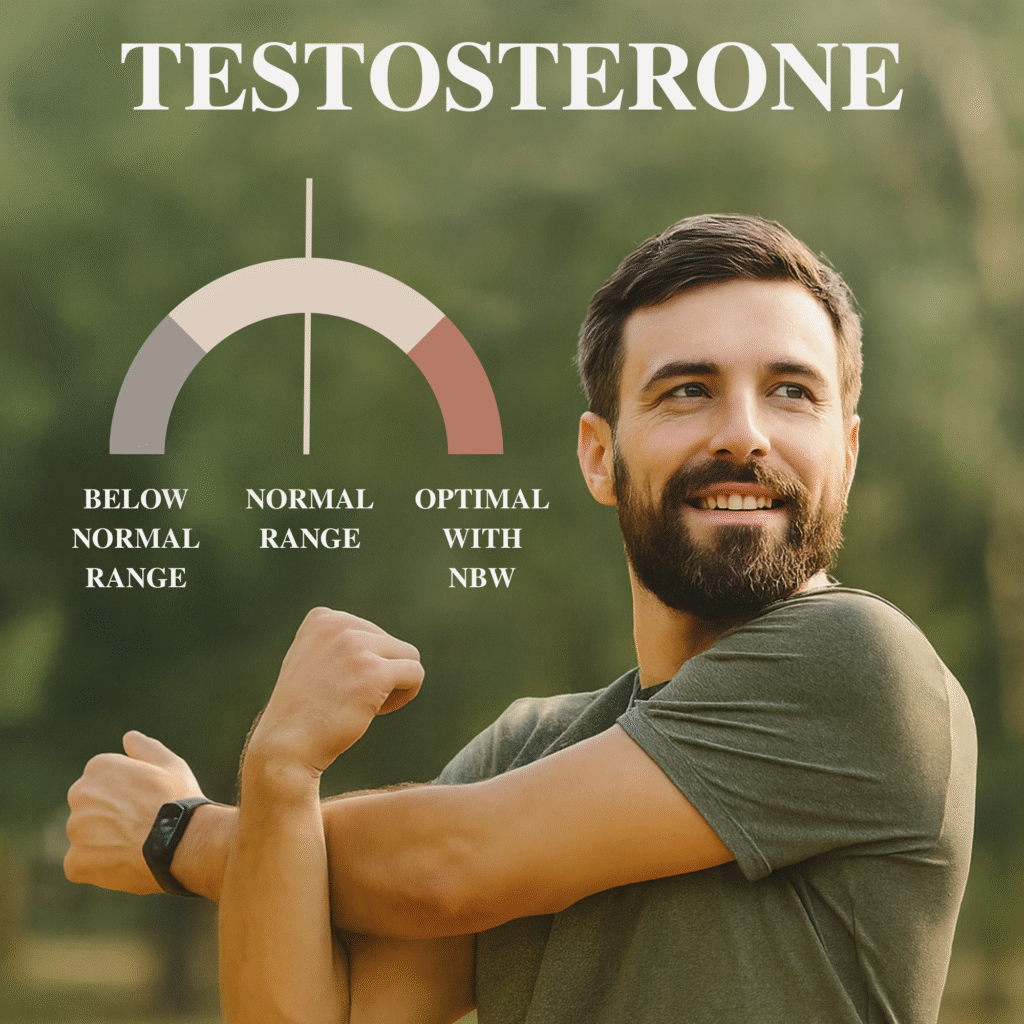
You’ve been feeling off lately—tired, a little irritable, and the motivation you once had is gone.
You decided to get a blood test, and the results came back: “Your testosterone levels are within the normal range.” But if they’re normal, why do you feel anything but?
At New Beginnings Wellness, we hear this story all the time. The truth is, a lab’s “normal” range is just an average. It doesn’t tell the full story of what’s optimal for you. We believe that your health should be measured by how you feel, not just by a number on a piece of paper.
The “Normal” Range vs. Your “Optimal” Range
A laboratory’s normal range, or reference range, is created from a statistical average of the population they test. It’s a wide range that includes data from a massive number of people, from a healthy 20-year-old to a less-than-healthy 70-year-old. While your testosterone level might fall somewhere in this broad window, it could still be too low for your body to function at its best, especially for your age and personal health goals.
The Full Picture: Beyond a Single Number
A common mistake is only looking at one number: Total Testosterone. But there’s more to the story.
- Total Testosterone: This is the total amount of testosterone in your bloodstream.
- Free Testosterone: This is the small percentage of testosterone that is not bound to a protein. It’s the active form of the hormone, and it’s what your body can actually use. You can have a “normal” total level, but if your free testosterone is low, you will still experience symptoms.
- Other Key Hormones: Hormones like Estrogen and Sex Hormone Binding Globulin (SHBG) also play a crucial role. For example, high levels of SHBG can “bind up” too much of your total testosterone, leaving you with very little free, usable testosterone.
This is why we always recommend a comprehensive lab panel to get a complete view of your hormonal health.
Symptoms of Sub-Optimal Testosterone
These are not just a “part of getting older.” They are signals that your body is not functioning at its peak.
Physical Symptoms:
- Persistent Fatigue: You feel constantly drained, even after a full night’s sleep.
- Changes in Body Composition: Noticeable weight gain, particularly around the midsection, and a loss of muscle mass despite consistent workouts.
- Low Libido & Erectile Dysfunction: A decreased sex drive and/or difficulty with sexual performance.
- Poor Sleep: Your sleep quality is poor, leading to a constant tired feeling.
Mental & Emotional Symptoms:
- Brain Fog: You struggle with memory, focus, and a general lack of mental clarity.
- Mood Changes: You feel more irritable, anxious, or even experience symptoms of depression.
- Loss of Motivation: The drive you once had to exercise, pursue hobbies, or tackle new challenges has faded.
The Benefits of Optimal Testosterone
By getting your testosterone levels into an optimal range, you can expect a transformative change. The goal is to feel like the best version of yourself, and this often includes:
- Renewed Energy: Waking up feeling refreshed and having the energy to get through the day.
- Improved Body Composition: A renewed ability to build muscle and lose stubborn fat.
- Mental Clarity & Focus: The “brain fog” clears, allowing for better concentration and mental sharpness.
- Enhanced Libido & Sexual Health: A return of your natural sex drive and improved performance.
- Better Mood: Feeling more balanced, motivated, and emotionally stable.
Frequently Asked Questions About Testosterone
Does testosterone naturally decline with age? Yes. For most men, testosterone levels begin a gradual decline around the age of 30. This process is natural, but when levels drop too low, it can lead to the symptoms we’ve discussed.
What are some common causes of low testosterone? Beyond aging, low testosterone can be caused by various factors, including stress, poor sleep, certain medications, obesity, and other health conditions. That’s why a comprehensive evaluation is so important.
How is TRT administered? Testosterone Replacement Therapy (TRT) can be administered in several ways, including injections, topical gels, and pellets. We work with each patient to determine the method that best fits their lifestyle and goals.
Are there natural ways to boost testosterone? While natural methods may offer a small boost, they are often not enough to correct a significant deficiency. We believe in a holistic approach that includes optimizing diet, exercise, and sleep to support your personalized treatment plan.
Our Approach: The New Beginnings Wellness Difference
We don’t just look at one number. Our approach to men’s health is to look at the entire picture. We start with a comprehensive evaluation that includes a detailed discussion of your symptoms and lifestyle, and an in-depth lab panel that goes far beyond a basic testosterone test.
We create a personalized plan that may include Testosterone Replacement Therapy (TRT) through injections or gels, along with lifestyle changes and nutritional guidance. This comprehensive approach is designed to help you thrive in every aspect of your life.
Ready to find out what your optimal looks like?
Contact us today to schedule a consultation.
Call Us: (419) 847-3458 or, visit our Contact Page: nbwclinic.com/contact-us
Tagged Hormones, Men's Health, Sylvania Testosterone, Testosterone, Toledo Ohio, TRT

